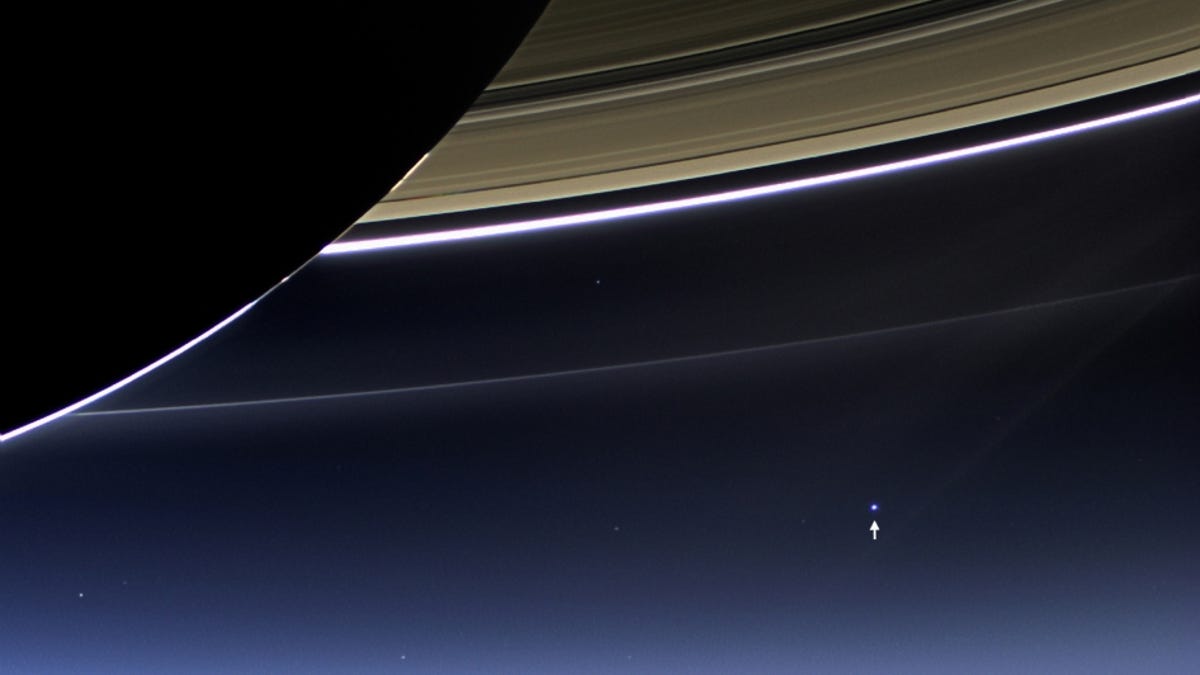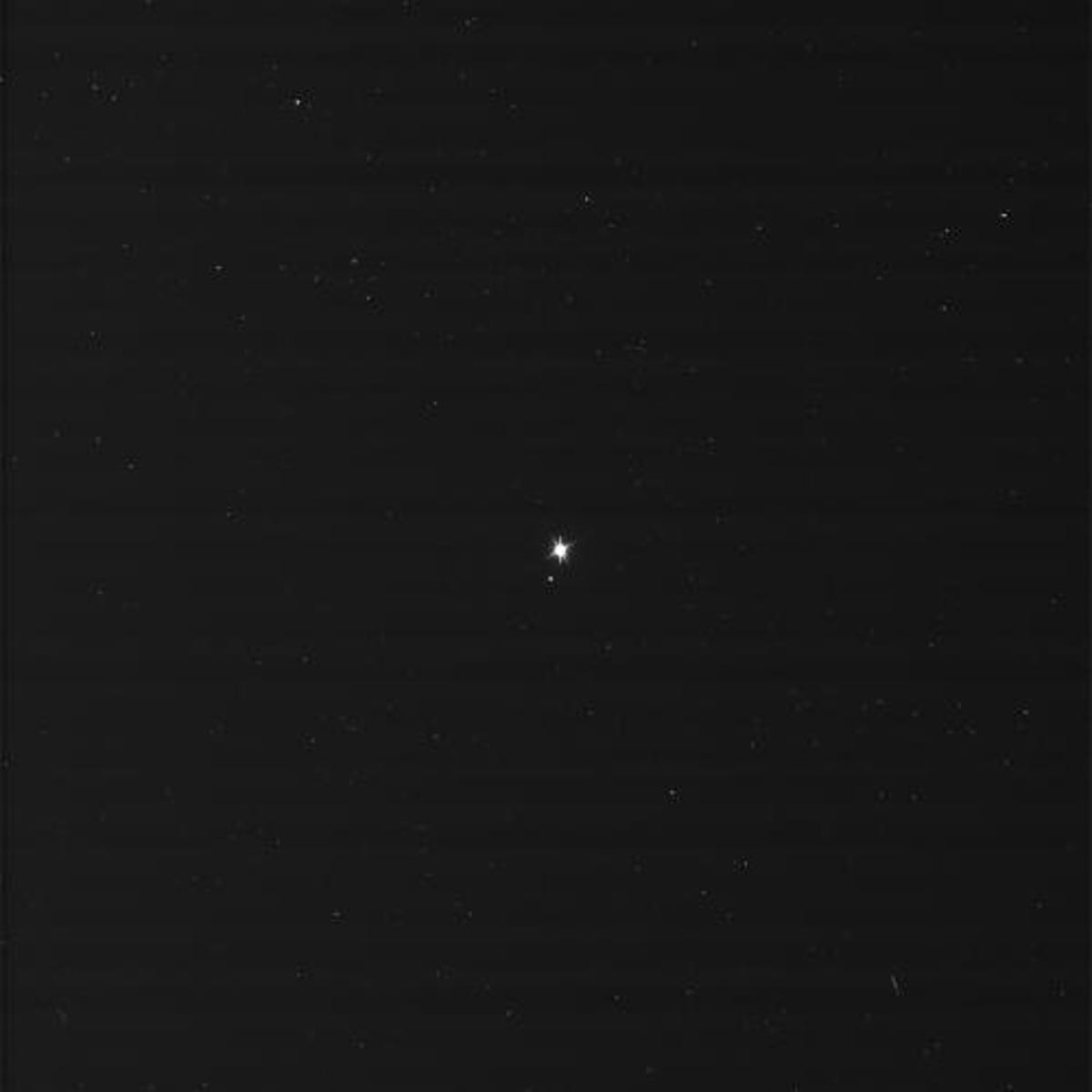Earth photographed from 900 million miles away (pictures)
NASA's Cassini spacecraft has returned new photos of Earth, taken from almost 900 million miles away.

Saturn's rings with Earth in the background
Two NASA spacecraft have returned new photos of Earth, taken from millions of miles away.
The Cassini spacecraft is perched in the Saturn system nearly 900 million miles away, as part of a cooperative project between NASA, the European Space Agency, and the Italian Space Agency. In this rare image, taken on July 19, 2013, the wide-angle camera on Cassini shows Saturn's rings with Earth visible in the background.
Photos like this are very rare, this is only the third time our planet has been photographed from the outer solar system. From millions and millions of miles away, Earth appears very close to our sun. Just like our eyes, the camera's extremely sensitive sensors can easily be damaged by looking directly toward the sun.
Cassini was able to take this image, NASA says, because the sun had temporarily moved behind Saturn from the spacecraft's point of view and most of its light had been blocked.
Earth and the moon are less than a pixel in size in this image, but appear larger because they have been overexposed by the long exposure used to capture the image.
Long exposures -- about 15 minutes in this case -- are necessary in order to capture enough light from extremely distant and dim objects in space. As a result, brighter objects in the field of view become saturated and appear artificially large.
Correction, July 23 at 10:45 a.m. PT: An earlier version of this image gallery misspelled the name of the Cassini spacecraft and misstated where in space the images were taken. This is only the third time ever that Earth has been imaged from the outer solar system. It has also been clarified that the Cassini-Huygens mission is a cooperative project of NASA, the European Space Agency, and the Italian Space Agency.
Earth and the moon from Cassini and Messenger
These images show views of Earth and the moon from NASA's Cassini and Messenger spacecraft taken on July 19, 2013.
In the Cassini image, the wide-angle camera has captured Saturn's rings, Earth, and the moon in the same frame. Earth, which is nearly 900 million miles away in this image, appears as a blue dot at center right. The moon can be seen as a fainter dot off to the right side.
In the Messenger image, taken from about 61 million miles away, Earth and the moon appear as a pair of bright star-like features.
Earth and the fainter moon
Cassini took this image of Earth and its moon from Saturn orbit on July 19, 2013. Taken while capturing a large wide-angle mosaic of the entire Saturn ring system, narrow-angle camera images were deliberately inserted into the sequence in order to image Earth and its moon. This is the second time that Cassini has imaged Earth from within Saturn's shadow.
Earth is the point of light on the left, and the moon is the fainter white dot on the right. The two are seen here through the faint, diffused E ring of Saturn.
Both Earth and the moon have been increased in brightness for easy visibility; in addition, brightness of the moon has been increased relative to Earth, and the brightness of the E ring has been increased as well.
Earth and its moon

898,410,414 miles away
First ever portrait, 'Pale Blue Dot'
'In Saturn's Shadow-The Pale Blue Dot'
Sixteen years after the famous "Pale Blue Dot" photo, Cassini imaged the Earth again, in 2006, in a mosaic of Saturn titled "In Saturn's Shadow-The Pale Blue Dot", seen here.
Now, seven years later, Cassini again photographed Earth in an event which marked the first time that people on Earth knew in advance that they were being photographed.
From nearly a billion miles away, NASA says more than 20,000 people gathered in events around the world and waved as we all had our portrait taken.

